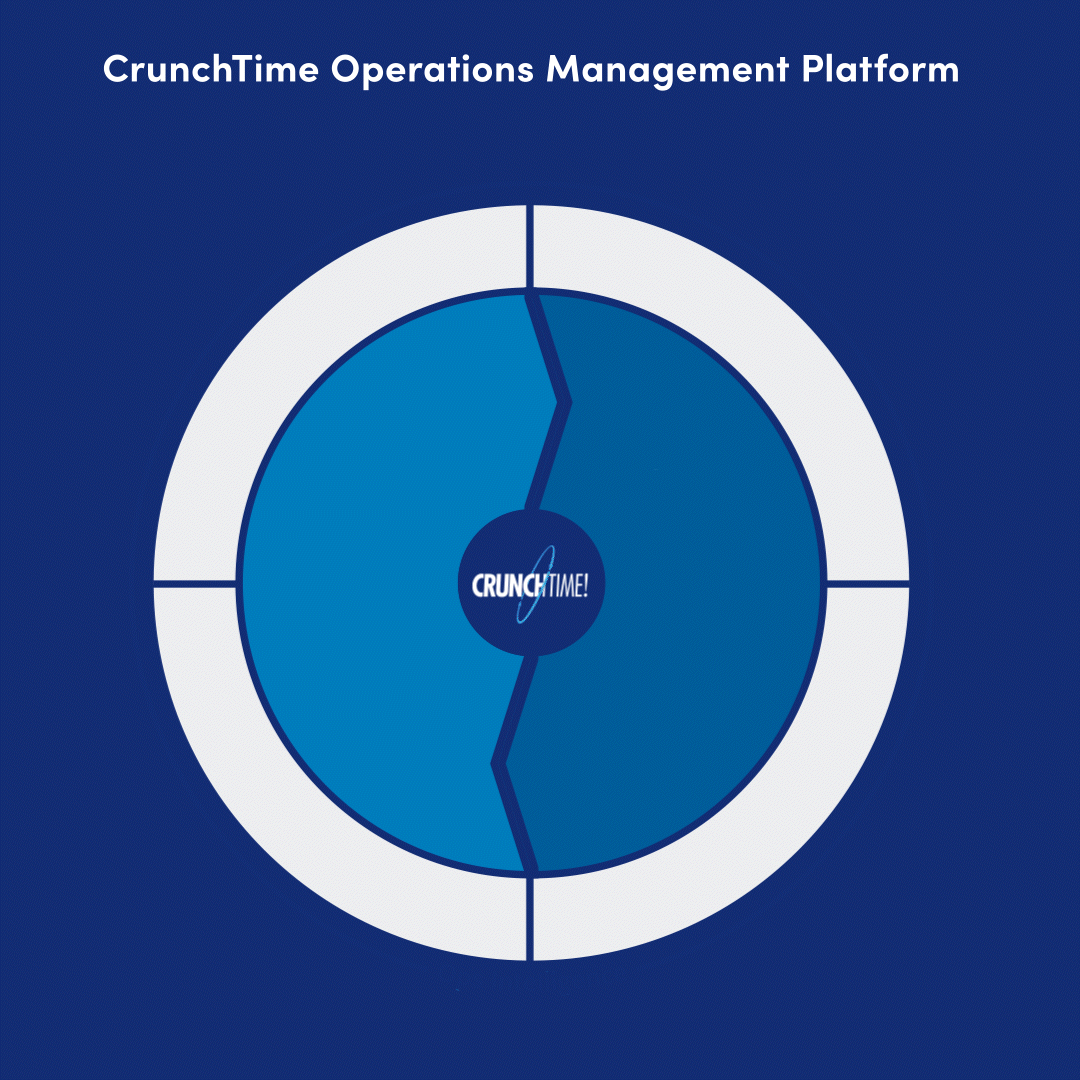
- Home
- Crunchtime Blog
- FSTEC Recap: How top operators are leveraging tech to overcome challenges and grow

FSTEC Recap: How top operators are leveraging tech to overcome challenges and grow
In an age where technology is equally feared and revered, people are often hesitant or adverse to new technology advancements, especially in the restaurant industry, which has been built around human connection. From "robots are taking our jobs" to "automation will eliminate human interaction,’"many restaurant brands, especially those that have been around for some time, may push back against tech updates that change how things have always been done.
But earlier this month at FSTEC, the annual conference “Where Restaurants and Tech Connect,” it was clear that embracing technology will be essential to success in the coming years. The 70+ speakers with backgrounds from across the industry came together to share insights into the industry and the products and strategies that are helping restaurants face challenges and safeguard against an uncertain future.
The three-day event included several innovation forums, where industry experts shared how they leverage technology to help their restaurant brands find success. Crunchtime’s forum, “Driving Customer Experience, Profitability & Growth through Technology-Led Ops Excellence,” explored how restaurant brands can optimize their operations and customer experience using tech.
With decades of industry experience between them, the forum’s panelists shared their perspectives on industry challenges and opportunities and how they tie technology into their operations.
The panelists for Crunchtime’s forum:
- Isaac Morton | Vice President of IT at Sizzling Platter
- Sean Thompson | Vice President of IT at Freddy’s Frozen Custard and Steakburgers
- MJ Worsham | Director, Restaurant Technology at Five Guys
The Challenges and Solutions:
While each restaurant operation faces a unique set of hurdles, it is clear there are common challenges shared across the industry. The panelists for Crunchtime’s innovation forum discussed some of those issues.
One big challenge that has persisted over the past few years is supply chain disruptions. Both on a local and global scale, external and internal factors contribute to a less-than-reliable supply chain for food and paper products. Product shortages mean that menus are in jeopardy, which can lead to disappointed customers and a decrease in profitability. Meanwhile, when suppliers ship out substitutions that haven’t been approved for use, restaurants can find themselves with products they can’t use while still not having what they actually need.
Embracing technology can help restaurants face an inconsistent supply chain. Communication technologies allow operators to instantly know when their stores will have a shortage or what substitutes are available, and they can help operators communicate with in-store managers. These technologies increase agility, so when a supply chain issue does occur, restaurants can act quickly to avoid jumbled responses that leave employees and customers confused or disappointed.
“We’ve managed, through our systems and our protocols, to have a lower gap from Actual vs. Theoretical [food costs] this year compared to the last two years combined” - MJ Worsham | Director, Restaurant Technology at Five Guys
.jpg?width=600&height=400&name=600x400%20px%20image%20crop%20(20).jpg)
Another challenge that restaurant brands are facing may be somewhat self-inflicted. To reduce costs, operators often target one of the biggest costs: labor. Unfortunately, reducing labor costs can be a double-edged sword. On the one hand, cutting labor hours allotted to stores can initially boost profits, but eventually, it can mean that shifts end up being short-staffed and more stressful, leading to unhappy employees and guests. Over time, a decrease in the quality of the customer experience means that customers will likely choose somewhere else to eat.
One way that restaurant technology can address this issue is by providing clear insight into how much labor is actually necessary for different shifts or days of the week. Sales trends, coupled with more granular data like the type of product being sold, can show how many employees really need to be in the restaurant at a given time to help it run smoothly. For example, in a quick service restaurant, it may take fewer employees to run a breakfast shift on weekdays versus the weekends because fewer customers dine in. By optimizing labor, the restaurant will be able to serve customers best while still helping employees feel supported.
Restaurant tech can also help train employees more effectively. Rather than relying on in-store trainers to provide top-notch training to new hires or promoted employees, a Learning Management System can ensure that each employee gets the training they need to feel confident in their position and to best serve customers. Meanwhile, thoughtful training programs can help train employees faster, reducing labor hours allocated to training team members.
“[By utilizing machine learning] we’ve been able to create a more flexible workforce, which has been pretty successful for us.” - Isaac Morton | Vice President of IT at Sizzling Platter
At FSTEC 2023, it was clear that technology can serve as a lifeline for restaurant operations. Using ever-evolving systems, restaurants can get more work done more consistently. From faster training to task management to automation, restaurant tech can help make restaurant operations more agile and future-proof. With this, restaurant technology can provide insightful data to help establish trends or patterns, helping restaurant operators make informed business decisions.
“People want direct, intelligible insights that help them know what they need to change in the business” - Sean Thompson | Vice President of IT at Freddy’s Frozen Custard and Steakburgers
The Takeaway: Know your brand’s core values and use technology to enhance them.
To learn more about emerging trends and imperatives for multi-unit restaurant success, download the 2023 Restaurant Operations Report.
Share this post
Related


FSTEC 2023 Innovation Forum Preview: Driving Customer Experience, Profitability, and Growth

.png?width=2463&height=1501&name=2023-Restaurant-Ops-Report-Thumb-LP-@2x%20(1).png)
